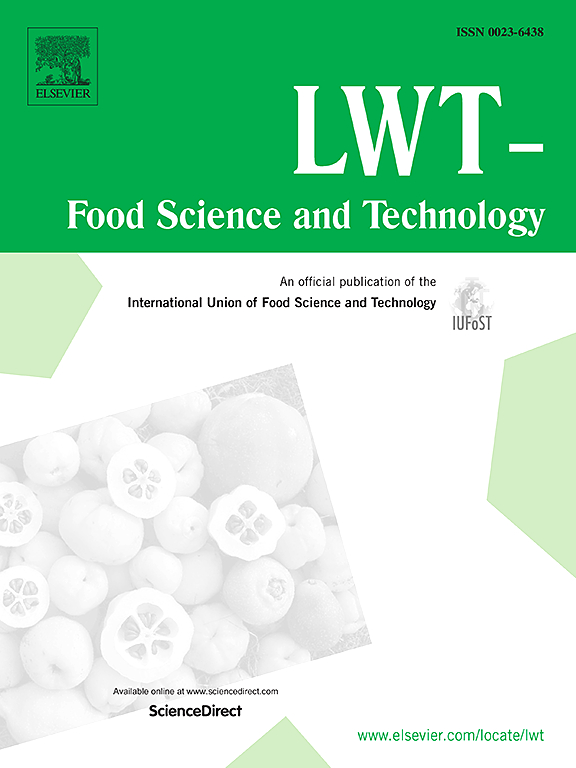Addition of salt microcapsules as strategy for sodium reduction: A case study in chicken burgers
IF 6
1区 农林科学
Q1 FOOD SCIENCE & TECHNOLOGY
引用次数: 0
Abstract
The study aims to evaluate the effect of adding salt microcapsules with different types of wall materials (maltodextrin, chitosan, double emulsions, alginates, liposomes) on the physico-chemical and sensory characteristics of meat products.
It was found the stability of the salt microcapsule in the burgers, allowing the salt to be released in the oral cavity. The addition of salt microcapsules mainly influenced sensory attributes, increasing the saltiness perception, decreasing the hardness of the product. However, the use of microcapsules with alginates and chitosan influence negatively on some sensory attributes and/or their acceptance. Most physico-chemical parameters of chicken burgers were not affected by the addition of salt microcapsules, except for pH (lower in burgers added with chitosan microcapsules) and instrumental texture (lower hardness and chewiness were found in salt microcapsules added batches).
These findings corroborated the influence of the wall material or type of microcapsules on the sensory perception of the added products, and point out the possibility of using salt microcapsules, preferably with maltodextrine, double emulsions and liposomes, in combination with usual salt, as strategy to reduce the amount of sodium without influencing the sensory quality of the added products.
添加盐微胶囊作为减钠策略:鸡肉汉堡案例研究
该研究旨在评估添加不同类型壁材(麦芽糊精、壳聚糖、双乳液、藻酸盐、脂质体)的盐微胶囊对肉制品理化和感官特性的影响。研究发现,盐微胶囊在汉堡中的稳定性使盐分在口腔中得以释放。盐微胶囊的添加主要影响了感官特性,增加了咸味感,降低了产品的硬度。然而,使用海藻酸盐和壳聚糖微胶囊会对某些感官属性和/或其接受度产生负面影响。除了 pH 值(添加了壳聚糖微胶囊的鸡肉汉堡的 pH 值较低)和口感(添加了盐微胶囊的批次硬度和咀嚼度较低)外,鸡肉汉堡的大多数理化参数都不受添加盐微胶囊的影响。这些发现证实了微胶囊壁材料或类型对添加产品感官的影响,并指出了将盐微胶囊(最好是麦芽糊精、双乳液和脂质体)与普通盐结合使用的可能性,以此作为在不影响添加产品感官质量的情况下减少钠用量的策略。
本文章由计算机程序翻译,如有差异,请以英文原文为准。
求助全文
约1分钟内获得全文
求助全文
来源期刊

LWT - Food Science and Technology
工程技术-食品科技
CiteScore
11.80
自引率
6.70%
发文量
1724
审稿时长
65 days
期刊介绍:
LWT - Food Science and Technology is an international journal that publishes innovative papers in the fields of food chemistry, biochemistry, microbiology, technology and nutrition. The work described should be innovative either in the approach or in the methods used. The significance of the results either for the science community or for the food industry must also be specified. Contributions written in English are welcomed in the form of review articles, short reviews, research papers, and research notes. Papers featuring animal trials and cell cultures are outside the scope of the journal and will not be considered for publication.
 求助内容:
求助内容: 应助结果提醒方式:
应助结果提醒方式:


